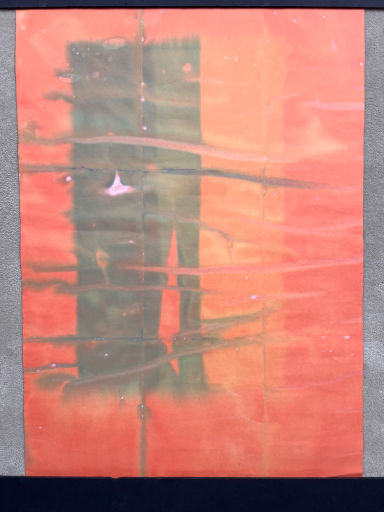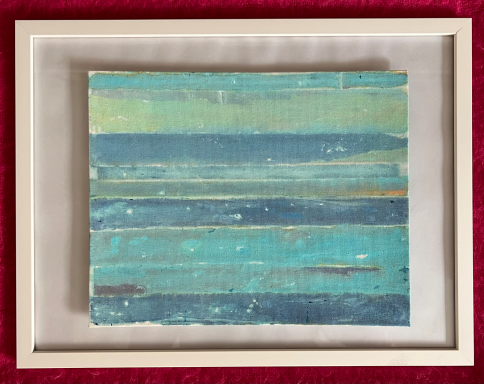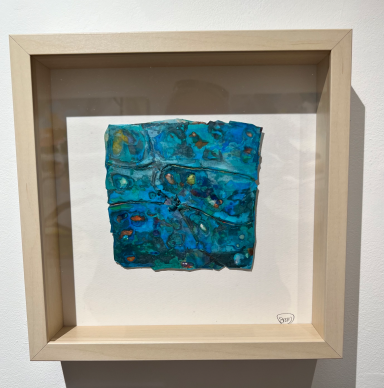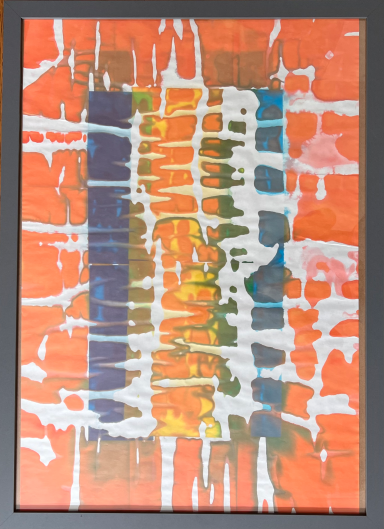Steve Mathews Art
Mathews is a multi-disciplinary artist working in mixed media, fictive story-telling and the agency of found objects.
He has a diploma in art and design from Putney School of Art and attended year-long courses at Newlyn School of Art and Morley College. He has exhibited at group shows and a solo show “Painterly Constructions” at Putney School of Art. His installation, “The Flaneurs, Lost in the City” will be his first site specific show at Olympic Studio Records on May 21-25, 2025.

A collaboration with Felicity Ross
AN ARTISTS GUIDE TO GETTING LOST
The inspiration behind this collaboration was Rebecca Solnit’s “ A field Guide to getting Lost” in which never to get lost is never to live.
The premise is that as human beings we are strengthened, enlarged, and built up by getting lost but consequently finding a way to return to the known state. The alternative is to lose the opportunity of those enhancements by never taking a risk. Those who never do may find life easy but will never be broadened or made strong by finding a way to return.
This is not about getting lost on a walk or around town but losing oneself. Solnit sees this as the way to finding love, inspiration, and wisdom through extending the boundaries of the self into unknown territory. And the role of the artist is to open doors, invite in the unknown, the unfamiliar. This echoes Keats concept of ‘negative capability’, a writer’s ability to accept uncertainty, mystery, doubt, without needing to seek fact and reason.
The need for uncertainty can lead to safe, dull, predicable lives and so we lack the skills to be more optimistic about direction and meaning in our lives. Solnit notes the ancient explorers most important skills was a sense of optimism about surviving and finding a way. This positive aspect of losing oneself resonated both with Mathews and Ross as artists and as an antidote to the current zeitgeist.
We caught up with Mathews and Ross in their London Studio and asked how they went about visualising such a complex subject. The breakthrough came when their tutor, Jane Millar, suggested they each start a piece then exchange it. Each artist was free to re-arrange / develop the piece and then pass back for further work. In doing so Mathews and Ross were giving up ownership of the work This experimentation and increasing emphasis on process was reminiscent of Fluxus.
So how did the artists respond to this approach? For Mathews the focus on process provided an unexpected relief from the burden of producing an end product. Mathews felt comfortable with the uncertainty of not knowing how or when a piece would come back from Ross. He was getting lost in the mysteries and uncertainty of the two-way process.
For Ross, the work exhibits elements of the state of being lost, confused, without a clear plan or route - but also it includes bright flashes and points of hope of returning to the known. There is a sense of enjoyment of being lost, the different, and the unfamiliar - but there is also the tension of being reined in, constrained, tethered to the straightforward, the unchallenging.
So, was the response to Solnit’s theory a success? While the initial plan was the focus on work that would reflect losing oneself, what happened was that the mysteries and uncertainties were more apparent and integral to the process.
Ross felt the making the work resulted in a ‘lost’ state for both of us for a number of weeks during the project as we felt our way. The original premise was borne out by the extent to which each of us was at ease producing abstract pieces of random materials: one of us was happy, the other out of any comfort zone. But we continued to respond to one another’s work and found that we were inadvertently exploiting the tension between our personal histories and approaches to life and our work.
A final quote from Benjamin Myers book, “The Offing”, p.26.
“Something drew me down the lane even though it had the appearance of leading to a dead end. This was to become one of those moments when life presents a new path whose importance may only be fully understood in years to come”



Mixed Media
Mathews work explores the beauty of weathered surfaces, where layers peel, blend, and erode into unexpected compositions. Inspired by the organic textures of aged painted walls and doors in the urban environment or corroded metals fences and posts in the rural landscape, he translates these chance formations into abstract paintings. This process driven work builds up and strips back to reveal hidden depths. He seeks to capture the interplay of colour, texture, and time—turning decay into dynamic, expressive art that invites viewers to find their own meanings within the surfaces.
Extensive use is made of DIY materials such as glue, plaster of Paris, and coloured paper. The process is one of construction and deconstruction— building up layers, then breaking them down, allowing texture and materiality to emerge through the act of erosion. During this process there is no prescriptive final image but a completeness as colours, shading and surface emerge. The interaction with the material allows it to respond almost with a mind of their own, an agency.
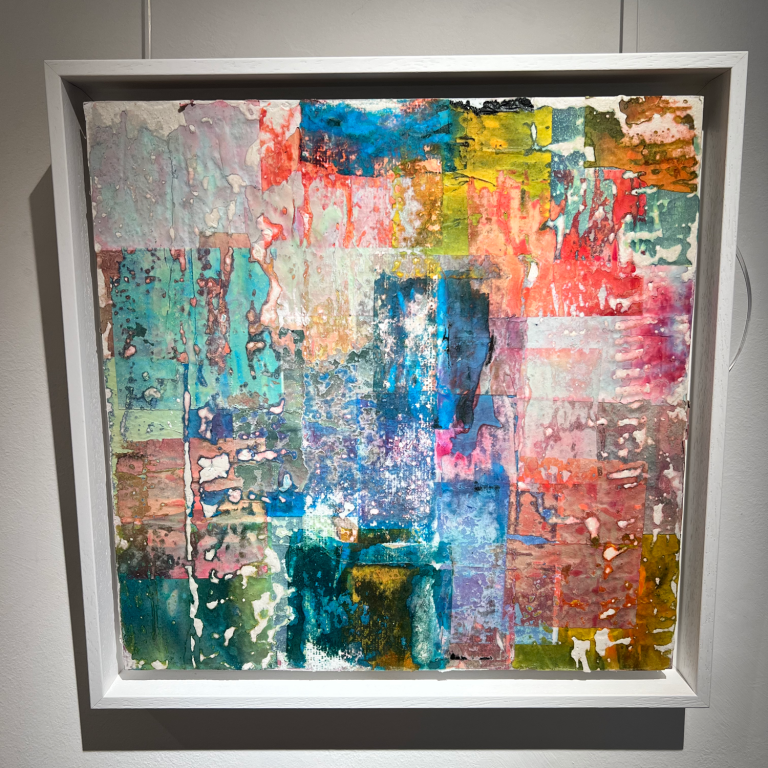
Fictive projects
The mysterious case of the fairy liquid bottle
I had been aware of what looked like an old Fairy Liquid bottle for several months. Quite a lot of litter is thrown over the fence protecting the railway, but this particular item always intrigued me. Why? It looked quite old, perhaps 20 years of more and so felt like more memory attached to it.
Being half exposed from the soil on the embankment, it also appeared to be emerging, was more showing over time? The other debris was typical litter like coke cans, ciders tins, etc. but why, who would dump a domestic item like this? But was it dumped liked the other litter? After the end of its functional life would someone really go to the trouble of walking down the stairs of their flat, across the square to the alley to litter?
Perhaps its age gave some possible clue? Its objective life could have coincided with the days when Blue Peter was encouraging children to create toys out of discarded domestic items. Perhaps the bottle was a crude water spray and was discarded after use. If that was the case, do the children, now grown up still live in the area?
Do they walk by and register its presence as a reminder of their childhood? A presence of absence? Besides me, has anyone else, walking along the alley on the way to the train station or park, taken note of this particular bottle, brief acknowledgments of its existence. A flickering agency turned on and off. Until now, a subject, an actant with its own narrative.
Gravity is also aiding the bottles progress as it gradually moves down the embankment. The ink colours on the bottle, red and greens continue to fade leached by the rain. The inks, perhaps oil based, mix with other contaminants in the embankment from trains (coal by products from 19th century steam trains and oil residues from 20th century diesel locomotives) to eventually join the water table.



Sold
Lorem ipsum dolor sit amet, consectetur adipiscing elit. Nulla euismod condimentum felis vitae efficitur. Sed vel dictum quam, at blandit leo.
Fictive projects; The Flaneurs
I remember it well; it was Hospital Umbels Sale Day. I work in a community record shop, Olympic Studio Records, and a customer asked if we had any albums by The Flaneurs, especially the so-called difficult second album, “Ambling, the Difficult 2nd album”. We often get requests for unusual bands or rare pressings and normally one of the volunteers can help but we just drew a blank. The customer, sporting quite an outrageous hairstyle (possibly a wig?) topped off with small hat fixed at an extreme angle, was incredulous that we had not heard of The Flaneurs and left dissatisfied.
This piqued my interest. Why had nobody heard of this band, who was in it? What records were released? What did they sound like? Were there any interesting memorabilia? It took some time but gradually vague clues to their existence began to emerge. My first discovery was not related to their records but merchandise, a game called “Snakes &” which was somehow related to the downfall of advanced capitalism! How intriguing? And so began my journey. Over several months I found a variety of material which led to the creation of this archive you see today.
The customer who in a way started this project never returned. However, I’d like to think he may discover this work and feel sufficient acknowledgement has been shown to that mythical band, The Flaneurs.
As far I could tell, the band was influenced by Situationist International (SI) which was composed of artists, intellectuals, and musicians. Essential to the SI theory was the concept of the Spectacle or autocratic reign of the market economy and its tendency towards the expression of social relations through objects. SI believed the shift from first hand directly lived experiences to individual expression by proxy through the consumption of commodities led to alienation and damage to the fabric of society.
To counteract the Spectacle, it was decided that situations would be constructed for the purpose of reawakening authentic desires and the liberation of everyday life. SI were always looking for new ways to challenge the Spectacle. In addition to writing pamphlets, debating, key SI members along with Marcel Duchamp decided to form a band, The Flaneurs. The music would create a new and exciting platform for the SI message.
Founded in the late 1950’s by the lead singer Guy Debord, the other band members were Walter Benjamin (guitars, harpsicord), Asger Jorn (screams) and Marcel Duchamp (drums). The music was an almost inaccessible mix of Dada inspired ‘sound’ and jazz which found neither critical nor commercial success. But that was not the point, or was it?

Snakes&
A game for working families (a minimal level of political consciousness required) struggling with alienation created by the Spectacle. No one can win. The aim is to raise awareness of the futility of advanced capitalism and its ability to escape from poverty. Snakes& was produced in vast numbers and handed out free as The Flaneurs toured the country.
It is rumoured that Ralph Rumney, a session musician for The Flaneurs, was sacked not because of the late submission of a psychogeographic article but because he suggested that ladders be included in the game. This was seen as too hopeful.
No Winners!
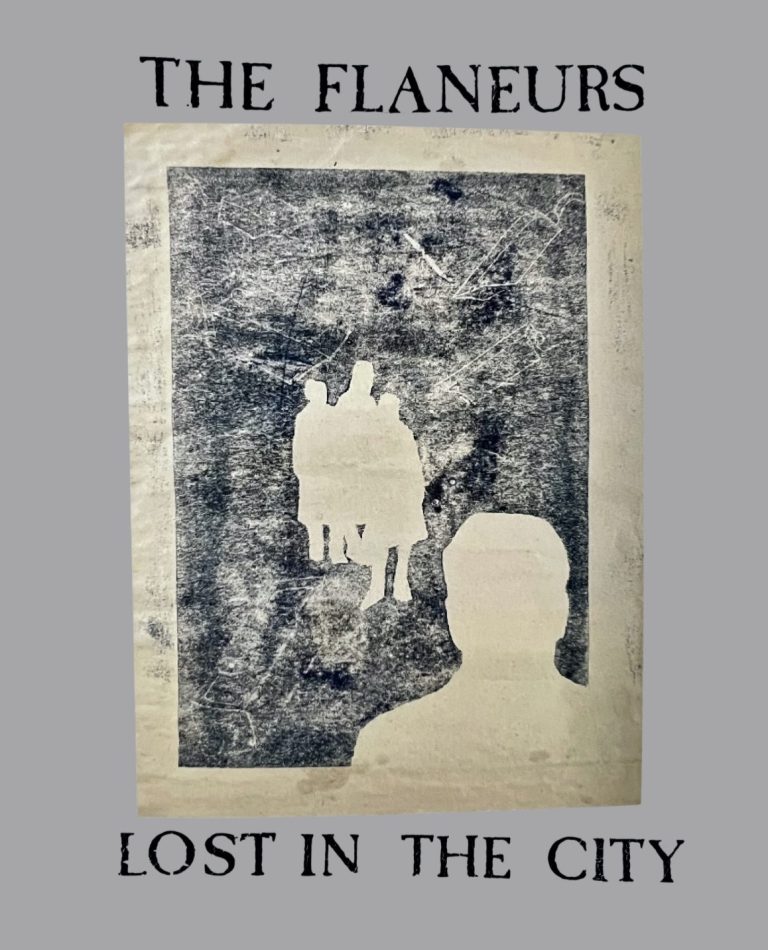
The second debut album
The second debut album “Lost in the City” was a concept triple album containing just a single track, “Spectacle” and unfortunately included several drum solos.
Consequences of advanced capitalism such as alienation, poverty and ‘consumer-slave trap’ are set to musical themes for the purpose of reawakening authentic desires and the liberation of everyday life. It was later made into an (unsuccessful) opera.

Ambling boots
.Interestingly the design incorporated heels with a slope of 30 degrees which forces upon the wearer a gradual lean to the left. Due to recent popular demand a right inclined version was made.
Currently being cleaned and reheeled.

An Original 178cm ‘single’
France has a long history as an international language of literature and scientific standards and in the late 18th century attempted to create a global standard for sound reproduction.
The standard was known as “un objet circulaire d’environ 178cm de diamètre incorporant des images impressionnistes pour la reproduction du son” ( a circular object roughly 178 cm (approx 7 inches) in diameter incorporating impressionistic images for the reproduction of sound).
Unfortunately, the French standard failed to be adopted for two main reasons. First, the very narrow grooves were perfect for philosophical debate but not a rhythm section let alone a lead guitar. Further, the rather long name was somewhat of a draw back. In the 1960's the rather snappier, Anglo-Saxon term, “7’ single” became increasingly adopted. In 1966 France withdrew from NAT0.
Contact us
©Copyright. All rights reserved.
We need your consent to load the translations
We use a third-party service to translate the website content that may collect data about your activity. Please review the details in the privacy policy and accept the service to view the translations.
